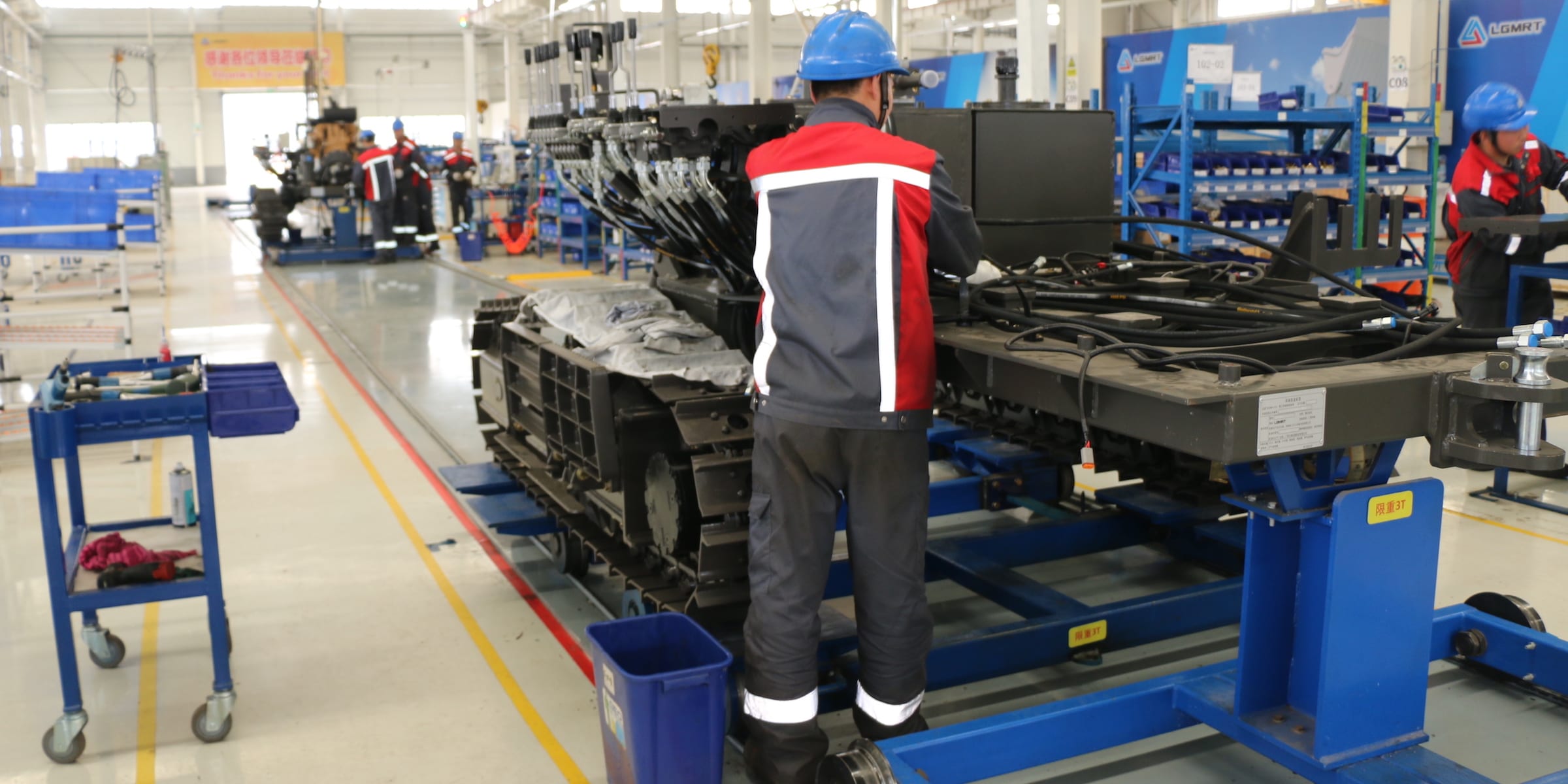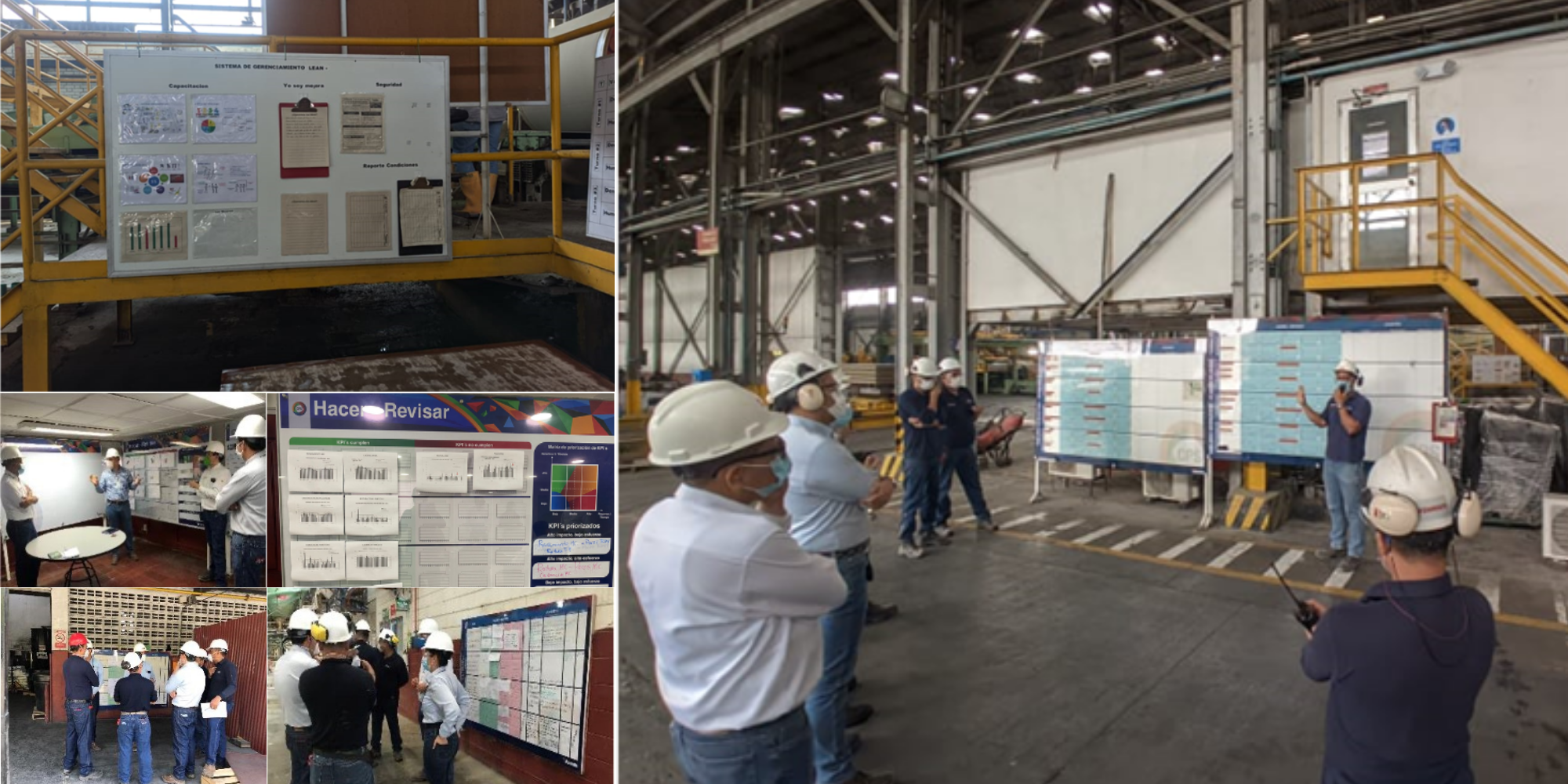
A tale of successful lean transformations worldwide
FEATURE – Leading lean transformations in different countries is often considered a challenge. The author claims it’s not as difficult as normally assumed, so long as you stick to the lean fundamentals.
Words: Kobus Malan, President Mid-Market, Sandvik Mining and Rock Technology
Many people believe that leading lean transformations in different parts of the world is a challenging undertaking. Over a period of 20 yours, I have had the opportunity to spearhead lean turnarounds in four countries – South Africa, China, Australia, and Sweden. My most recent career move took me back to China, and very recently I have returned to the country where my journey began: South Africa. Even though these transformations had varying degrees of success, they all taught me something. The biggest lesson of all, for me, is that bringing the journey back to the fundamentals of lean – the five principles – is likely to lead to positive outcomes.
My lean journey all started when I read Womack and Jones’ Lean Thinking, which gave me the vision of how a struggling South African subsidiary of a Swedish company, of which I had been appointed General Manager, could be transformed into a profitable and sustainable company. The logical steps of a transformation outlined in the book made a lot of sense to me, and I built my new role as General Manager (and lean advocate) around them.
The company manufactures rock drilling tools, mainly for the mining industry. It was in dire straits due to poor quality and delivery performance, bad cash flow and a total lack of profitability. The first thing that had to be done was to restructure management, of which there were too many layers. This gave me the opportunity to select a smaller management team that would likely buy into the lean transformation. We then trained the team in basic lean principles, before we formulated a vision and a strategy that had lean as a central theme.
We planned and followed the basic lean transformation principles and steps detailed in Lean Thinking:
- Specify value from a customer perspective. What does the customer expect of us in terms of quality and delivery performance?
- Map the value stream. The book Learning to See: Value Stream Mapping to Add Value and Eliminate MUDA by Mike Rother and John Shook was an excellent guide.
- Reorganize for flow. We had to move most of the machines to create a better flow.
- Implement a pull system. We implemented Kanban and supermarkets.
- Pursue perfection. In three years, we went through steps 1-4 twice.

We learned very quickly that the process described above was relatively easy to manage, when compared with the human factors influencing the outcome of the initiative we had started. Getting buy-in from all levels of management, especially supervisory level, as well as workers and union leadership was by far the hardest part. Thus, we designed and implemented an extensive communication plan that included role play by industrial actors, company information sessions, green area meetings with visual performance boards, newsletters, milestone celebrations and intensive union communications and negotiations. We also created a Lean Promotion Team, consisting of high-potential individuals who would help supervisors to implement lean ideas at the front line. Kaizen events for pace-maker processes took the implementation to another level with good results. We also used the five principles to re-engineer our Customer Support function.
Our results improved and, after three years, the company experienced a dramatic improvement in the following key areas: profit (percentage of NIS) went from 1 to 12%; exports (percentage of sales) grew from 15% to 32%; lead-time was reduced from 10-15 days to 3; inventory went from 90+ days to 47; paid claims (percentage of PTO) dropped from 1.2% to 0.4%; scrap went down from 2% to 1.3%.
Reflecting back, I think the main factors behind our success were the following:
- We focused on the customer;
- We linked lean thinking to the company’s strategy, thus creating a common goal;
- We facilitated buy-in from managers and eventually a critical mass of workers;
- The transformation was led from the top;
- We chose our lean leaders carefully;
- We brought lean to all our processes, not just manufacturing;
- We spent more time on developing people than on improving processes;
- We implemented very visual performance measurements;
- We were patient! Lean transformations are not a short-term undertaking.
FROM SOUTH AFRICA TO THE WORLD
The next mission in my career was in China, leading a sales organization and several manufacturing sites – three with machining and heat-treatment operations and two with assembly operations. The multi-site setup was a challenge due to the geographic distribution of the factories and the different styles of the local management. Some of the sites were added by acquisition and there I took the opportunity to appoint lean advocates in key positions. I also took some time to get accustomed to the local culture and observe key leaders before we initiated the transformation.
I followed the same process as I had in South Africa, starting with a company strategy session that focused on the needs of our customers and on lean principles. Culturally, I found it easier to initiate change in China, as soon as compelling case was presented, a common goal was identified and strong leadership appointed or developed. Leadership also proved to be the major critical success factor because not all local general managers and plant managers could be converted into lean supporters and advocates. Not surprisingly, in those sites, lean only had limited success – which was reflected in the results they could achieve. During my first four years in China, I underwent my own transformation, becoming a much stronger coach than before.
I then moved to Australia, where I assumed a regional role for rock drilling tools manufacturing (with operations down under, but also in China, India and South Africa). To create a manufacturing base in India, we acquired two companies (they eventually merged), to which we brought lean thinking. The appointed General Manager and Production Manager were very receptive to lean and I coached them in how to build it into their strategy and follow the “standard” process based on the five principles. Their lean transformation was also remarkable and the company grew from strength to strength since the acquisition, aided by a solid lean transformation plan.
In contrast, in Australia, at a small drill pipe plant, lean had limited affect. The local plant manager was committed, but never had enough time to implement plans due to production pressure. But this was not the biggest constraint: his efforts to implement 5S and basic lean ideas were hampered by resistance. The failure at this company in Australia was mainly due to a lack of buy-in at grass roots level.
After Australia, I moved to Sweden. There, I was promoted to lead a division designing and manufacturing rock drills and automation products. The rock drill plant was already quite advance in its lean transformation, which gave us the perfect chance to push ourselves in pursuit of the elusive fifth principles of lean: perfection. A clear opportunity for improvement was the micro-flow between operations, which wasn’t optimal.
We implemented kanbans and supermarkets after designing a future state with value stream mapping, resulting in a significant improvement in throughput time and inventory days. In my experience, consensus and buy-in is very important for Swedes and a lot of time had to be spent on discussing all the options for a transformation plan. After evaluating the division’s product development and design processes, we found there was a lot of waste and uncertainty in these processes at the time.
Design and development plans and progress were hidden in designers’ laptops and only partially reviewed, with the aid of PowerPoint presentations, once a quarter. I searched for lean techniques for product development and came across a methodology called Pulse, which used all the basic principles of Lean with good visual performance measurement. Again, we followed the same process – starting by defining value from the customer’s point of view and by running a company strategy session. We reached consensus about the strategy and the plan and appointed a consulting company to carry out the Pulse training. We created a Pulse Room with enough white boards to visualize the customer needs, the market situation, the product portfolio plans and a project board for each project approved by the management team. The principles of customer needs, mapping the value creation, flow, pull and pursuing perfection were all built into the Pulse system. Short Pulse meetings were held daily or weekly, depending on the function of the Pulse team.

The transformation of our product development function had a successful start with significant improvement in identifying the real needs of the customer, quicker decision making, interaction, visualization and time-to-market for new products. Success breeds success and the management team, after a long discussion, decided to start to implement in other company processes and we chose employee onboarding as a pilot. Again, the five principles were applied and the pilot was successful, resulting in much fewer steps and shorter onboarding and induction of new employees. The division continued to apply lean to many other management processes.
After a year-long sabbatical, I accepted a new mission with another company, again in China. This time it was to develop their mid-market presence and market share, which we did by creating a greenfield joint venture for mid-market mining and construction equipment. Starting a greenfield is always a big challenge with many headaches, but one of the benefits is that you can build lean into the company operations from the very start and choose the right people to lead the journey.
We did exactly this and after almost two years of operation, the joint venture is a successful example of lean manufacturing and lean product development. I used the well-proven five principles and relied on the critical success factors that I had identified over the previous 20 years. There was, however, a new challenge to this transformation: I had to convince our joint venture partner, also a lean practitioner, that embracing lean would improve their then-unstructured product development function. After attending several meetings in the Pulse room, the team bought into the transformation and started to implement the methodology with enthusiasm and pride.
After 20 years of leading, promoting and coaching lean transformations around the globe, I came to the conclusion that the five principles of lean and the critical success factors I have shared in this article are universal and can be applied to any process, anywhere in the world. There is, however, one part of the transformation that is most critical: people. Making processes lean is important, but it only represents the tip of the iceberg, so to speak. The mass of the iceberg below the surface is the people factor, and this is the secret to success with any lean transformation. Focusing only on the process and disregarding the time and effort needed for management and worker buy-in will lead to failure.
THE AUTHOR

Passionate about continuous improvement and operational excellence, Kobus Malan began his lean journey in 1998 with reading the seminal book Lean Thinking. His lean leadership journey has taken him from South Africa to China to Australia to Sweden and then again to China. Over a 20-year period, he has led several lean transformations in different companies and countries, covering manufacturing and product development. Until June 2018 he held the position of President Mid-Market at Sandvik Mining and Rock Technology.
Read more


INTERVIEW – By making lean its way of thinking and acting, a hospital in Porto Alegre, Brazil was able to dramatically improve patient flow and transform its culture.


CASE STUDY – A Scaling Kaizen initiative at Veolia Water Information Systems engaged 45 teams in Lean IT practices, improving delivery, incident reduction, and fostering talent.


FEATURE – Why do lean and green go hand in hand? In the experience of this university in Edinburgh, they are both about respecting people and thinking holistically.


CASE STUDY – For the past year, Elementia Materiales, a producer of materials for the construction industry, has begun a lean journey that’s already brought impressive quality results.

